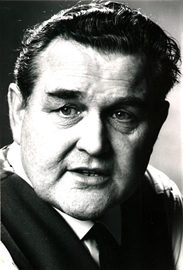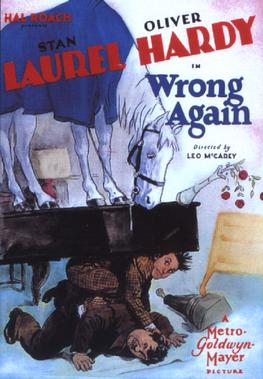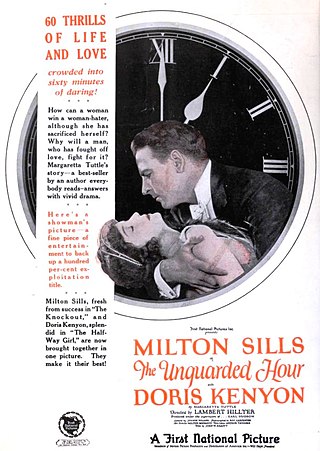Related Research Articles

The United Kingdom has had a significant film industry for over a century. While film production reached an all-time high in 1936, the "golden age" of British cinema is usually thought to have occurred in the 1940s, during which the directors David Lean, Michael Powell, and Carol Reed produced their most critically acclaimed works. Many British actors have accrued critical success and worldwide recognition, such as Audrey Hepburn, Olivia de Havilland, Vivien Leigh, Glynis Johns, Maggie Smith, Laurence Olivier, Michael Caine, Sean Connery, Joan Collins, Judi Dench, Julie Andrews, Daniel Day-Lewis, Gary Oldman, Emma Thompson, Anthony Hopkins Hugh Grant and Kate Winslet. Some of the films with the largest ever box office returns have been made in the United Kingdom, including the third and sixth highest-grossing film franchises.
The year 1903 in film involved many significant events in cinema.
The following is an overview of the events of 1897 in film, including a list of films released and notable births.

The British Film Institute (BFI) is a film and television charitable organisation which promotes and preserves film-making and television in the United Kingdom. The BFI uses funds provided by the National Lottery to encourage film production, distribution, and education. It is sponsored by the Department for Culture, Media and Sport, and partially funded under the British Film Institute Act 1949.
The Mitchell & Kenyon film company was a pioneer of early commercial motion pictures based in Blackburn in Lancashire, England, at the start of the 20th century. They were originally best known for minor contributions to early fictional narrative film and Boer War dramatisation films, but the discovery in 1994 of a hoard of film negatives led to restoration of the Mitchell & Kenyon Collection, the largest surviving collection of early non-fiction actuality films in the world. This collection provides a fresh view of Edwardian era Britain and is an important resource for historians.
Sagar Jones Mitchell was a pioneer of cinematography in Blackburn, Lancashire, England.
James Kenyon was a businessman and pioneer of cinematography in Blackburn, Lancashire, England.
Prestwich Camera was a cine camera eventually fitted with external magazines capable of holding up 400 feet (120 m) of film.

Norman Mitchell Driver, known professionally as Norman Mitchell, was an English television, stage and film actor.

Wrong Again is a 1929 American two-reel silent comedy film directed by Leo McCarey and starring Laurel and Hardy. It was filmed in October and November 1928, and released February 23, 1929, by Metro-Goldwyn-Mayer. Although a silent film, it was released with a synchronized music and sound-effects track in theaters equipped for sound.

The BFI National Archive is a department of the British Film Institute, and one of the largest film archives in the world. It was founded as the National Film Library in 1935; its first curator was Ernest Lindgren. In 1955, its name became the National Film Archive, and, in 1992, the National Film and Television Archive. It was renamed BFI National Archive in 2006.

The Sun Shines Bright is a 1953 American Comedy-Drama Western film directed by John Ford, based on material taken from a series of Irvin S. Cobb "Judge Priest" short stories featured in The Saturday Evening Post in the 1910s, specifically "The Sun Shines Bright", "The Mob from Massac", and "The Lord Provides".

Cradle Snatchers is a 1927 American silent comedy film directed by Howard Hawks. The picture is based on the 1925 Russell Medcraft and Norma Mitchell stage play of the same name that starred Mary Boland, Edna May Oliver, Raymond Hackett, Gene Raymond and Humphrey Bogart. An incomplete copy, missing part of reel 3 and all of reel 4, exists in the Library of Congress.

Madame Behave is a 1925 American silent comedy film directed by Scott Sidney starring cross-dressing actor Julian Eltinge. The film is an adaptation of the play Madame Lucy by Jean Arlette and was produced by Al Christie with distribution through Producers Distributing Corporation.

The Death of Poor Joe is a 1901 British short silent drama film, directed by George Albert Smith, which features the director's wife Laura Bayley as Joe, a child street-sweeper who dies of disease on the street in the arms of a policeman. The film, which went on release in March 1901, takes its name from a famous photograph posed by Oscar Rejlander after an episode in Charles Dickens' 1853 novel Bleak House, and is the oldest known surviving film featuring a Dickens character. The film was discovered in 2012 by British Film Institute curator Bryony Dixon, after it was believed to have been lost since 1954. Until the discovery, the previous oldest known Dickens film was Scrooge, or, Marley's Ghost, released in November 1901.
Half a Truth is a 1922 British silent crime film directed by Sinclair Hill and starring Margaret Hope, Lawford Davidson and Miles Mander. It was based on a 1911 novel by Eliza Humphreys writing as Rita.

The Unguarded Hour is a 1925 American silent comedy-drama film directed by Lambert Hillyer and starring Milton Sills, Doris Kenyon, and Claude King. The film's sets were designed by the art director Milton Menasco.

Hold Your Breath is a 1924 American silent comedy film directed by Scott Sidney and starring Dorothy Devore, Walter Hiers, and Tully Marshall.

Trying to Get Arrested is a 1909 American comedy short film directed by D. W. Griffith, produced by the Biograph Company of New York City, and starring John R. Cumpson. Filmed in two days in early 1909 at Palisades Park, New Jersey, it was released in April that year and distributed to theaters on a "split reel", which was a single film reel that included more than one motion picture. The other picture that accompanied this comedy was the Biograph "dramedy" The Road to the Heart.
References
- ↑ Whalley & Worden 1998, p. 48.
- ↑ Toulmin 2006, p. 46.
- ↑ Whalley & Worden 1998, p. 40.
- ↑ Toulmin, Popple & Russell 2004, p. 10.
- ↑ Whalley & Worden 1998, p. 41.
- ↑ Toulmin 2006, p. 47.
- ↑ Toulmin 2006, p. 50.
- ↑ Toulmin, Vanessa (2005). "Mitchell & Kenyon". In Richard Abel (ed.). Encyclopedia of Early Cinema. Taylor & Francis. p. 438. ISBN 978-0-415-23440-5.
- ↑ "Electric Edwardians: The Lost Films of Mitchell & Kenyon (1900-1906) Review". SilentEra.com. Retrieved 8 January 2014.
- Bibliography
- Toulmin, Vanessa (2006), Electric Edwardians: the story of the Mitchell & Kenyon collection, BFI
- Toulmin, Vanessa; Popple, Simon; Russell, Patrick (2004), The lost world of Mitchell and Kenyon: Edwardian Britain on film, BFI, ISBN 978-1-84457-047-8
- Whalley, Robin; Worden, Peter (1998), "Forgotten Firm: A Short Chronological Account of Mitchell and Kenyon, Cinematographers", Film History , 10 (1): 35–51, JSTOR 3815400